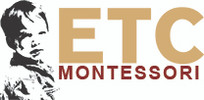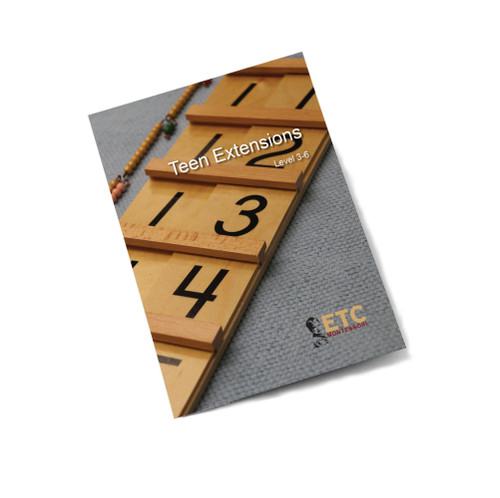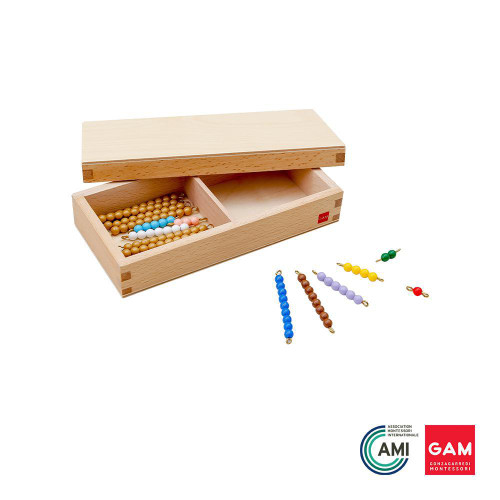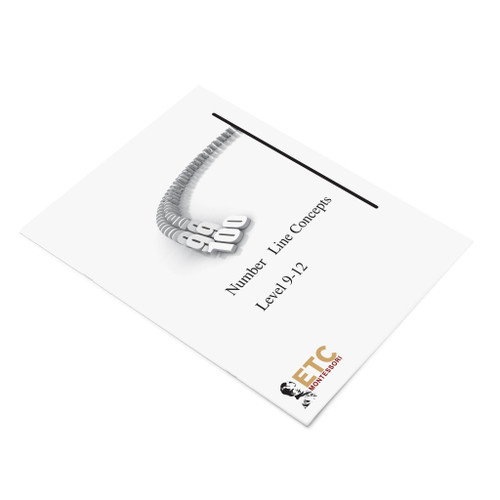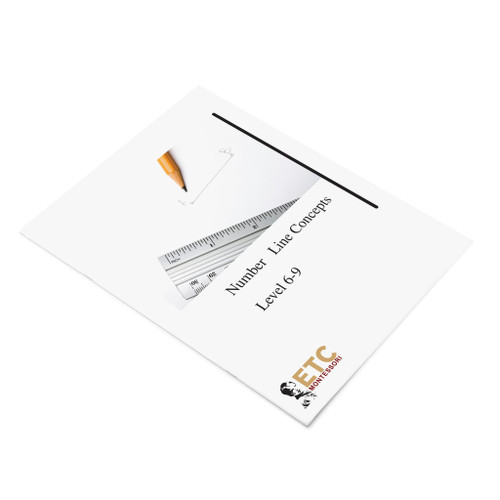Product Overview
- No Lamination Required.
- Printed on Premium Thick Plastic, Cut and all corners rounded.
- This material is ready to start using. No other prep work is needed.
As early as 1939, Dr Montessori identified the difficulty that young children have with remembering the names of the teens numerals. To this day there is only one original material used in the counting of the teen numerals. Bring in the studies of modern-day brain research applied to the educational setting, and you begin to see the complexity behind the observation.
“Although the base-10 system has taken over most languages, how we say numbers in different languages runs the gamut from simple to complex. English has many inconsistencies in its number words. Ten has three forms: ten, -teen, and -ty. Eleven and twelve fit no pattern, and the ones are stated before the tens in the numbers 13 through 19. (p. 20)” - Sousa, David. How the Brain Learns Mathematics
While this gives reason to why the naming of the teen numerals is so difficult, it also leaves room for the development of bridging activities to assist children in the naming of these numerals in linear counting. Laboriously repeating a presentation in hope that the child will “soon get it” is inconsistent with Montessori pedagogy.
- What is the sequence from concrete to abstract and simple to complex?
- How do we go from whole to part to whole within the sequence?
- What is the isolation of difficulty that allows the child to generalize to the whole?
How many times have you observed a child continuing to count the individual beads on a ten bar, but pick up a brown colored bead bar and automatically name it as eight? What is it that allows the child to automatically assume that the eight bar will have eight beads, but must verify that the ten bar will always have ten beads?
When placing the black and white beads in the Snake Game, automatically knowing that the bead bar that has five black beads and four white beads has nine beads altogether, is using two visual clues together: subitizing and pattern recognition.
Dr. Montessori’s use of color in the colored bead stairs is a form of pattern making. Recognizing five black beads and four white beads automatically gives you nine beads altogether. Imagine if there was no color break after five, what would the natural solution be to find out how many beads there were on the bar? To count.
When children resort to counting by ones, they use valuable learning time on a repetitive task. To start counting at ten is cognitively more efficient and allows children to focus on the new learning task. To assist children in recognizing that a set of ten is ten, regardless of its formation, is the initial task. With a direct aim intended to solidify this concept it is necessary to show “ten” in multiple ways. To this end the extensions provided here are suggested to tap into number patterns the children already recognize and move them to understand the building and the naming of the teen numerals. They are to be shown after the initial presentation with the teen boards.
Each card is printed on our signature thick plastic with all corners rounded.
Included in the kit:
- 8 sets of cards - Total of 132 cards
- 2 half page matrix charts
- 4 teen strips
- 155 two sided counters with container
- Teacher's Guide with presentations
Card size(s):
| Book | 8.5 x 11 in. | 21.6 x 28 cm. |
| Half cards | 8.5 x 5.5 in. | 21.6 x 14 cm. |
| Picture cards | 4 x 3.5 in. | 10 x 9 cm. |
RESOURCES
Rationale for Teens Extensions
The following resource materials are highly recommended:
SUGGESTED CONTAINERS
1 ETC Acrylic Chart Holder - Large
1 Seagrass/bamboo Rectangular Basket - Medium
